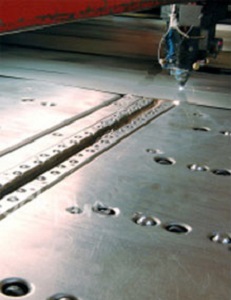For some fabricators, maintaining laser machines is given. These fabricators know how important it is to keep laser machines well maintained for the sake of top level performance. On the other hand, maintenance of these machines is not the top priority for some fabricators.

What they seem to care more about is the uptime production time rather than scheduling maintenance. It is not until a problem occurs that they think about troubleshooting. At this point, however, this is bound to be a daunting task because the fabricator has not stayed at the top of the maintenance. The problem could be due to a number of issues, and figuring it out cuts down on productive time.
To prevent such occurrences, it is important not to overlook some of the commonly overlooked areas in laser machine maintenance which include:
1. Chiller
Checking on compressed air and optics are not enough for a fabricator to be well maintained. The chiller is all about maintaining temperature, hence the need to ensure that the temperature gauge reading does not waver. Variations in this temperature could cause a number of problems, thus compromising the machine’s performance. For instance, the resonator could get damaged, hence requiring repairs that are not only costly, but also takes time.
Nowadays, chillers come with a temperature sensor to prevent the variation of temperature and problems that come with it. New control technology on this type of equipment enables one to set chiller units to a constant temperature.
A major cause for underperformance of chiller units is a buildup of electrical conductivity. This often happens if the laser is left idle for several days. As a result of the buildup, the resonator cannot start until the conductivity level is lowered to a more suitable one. Running the chiller for a few minutes prior to laser cutting should be able to start the resonator. Occasional change of the resin is also necessary.
2. Gas delivery
More often than not, delivery of gas to the resonator does not require maintenance. However the occasional gas leaks often go unnoticed. To check for gas leaks, apply soap to the resonator bottles every time you change.
3. The optics
Simple maintenance is not enough to ensure that optics don’t affect its life, beam quality, mode performance and the cutting performance. Ensuring that their specs are up to date may however, turn things around. As a result, they need to be returned to OEM Specifications after every maintenance checkup.
Beam profilers and analyzers are high tech tools used to measure beam characteristics. This equipment is, however costly for the average fabricator to afford. As a result laser machine manufacturers attach imprinted burn profiles made of acrylic on lasers before selling them. This allows fabricators to quickly reference the optic specs, right shape and size as well as power setting. It also helps to check for cleanliness of the optic beams.
Hot optic checks are performed to check for hot burns in trans-missive optics, particularly the output coupler and lens. Distortion may not always be recognizable, but gradual change in the kerf width is a clear indication of distortion.
4. Cleanliness
This is probably the most overlooked area of laser machine maintenance. It does not take rocket science to tell when slugs, pallet ways, scrap drawers, processing areas and slats are dirty. This basically indicates negligence on the part of the fabricator and can affect the efficiency of a laser.
Some fabricators often neglect the responsibility of cleaning up grease, debris, grime and dust on machine parts. This causes buildup which often results in inconsistency, inaccuracy and reduced productivity of the machine.
Buildup of dirt on scrap drawers, ducting, processors and dust collector may result in thermite buildup. This in turn causes ignition of high temperatures, which may damage the machine significantly.
5. Watch the assist gas
Laser machines often rely on assist gas for cutting purposes. To achieve clean cuts, the gas flows onto the cutting edge via a laser head. The most common assist gases include shop air, nitrogen and oxygen. Oxygen gas requires the lowest pressure for delivery to the cutting head and often oxidizes edges of the part being cut. Nitrogen requires a higher flow but does not leave oxidized edges.
Since it has faster processing speed, shop air is often used as an assist gas to cut aluminum, stainless steel and mild steel. To use it, the compression air needs to be free of moisture and contamination. For this purpose, it is important to ensure constant air filtration and pressure.
Routine maintenance of the compression source as well as the flow lines is the sole responsibility of the fabricator. Most manufacturers will provide such guidelines, but it’s important to check on these two issues at least once in a month.
While manufacturers make laser maintenance easier, fabricators still have an active role to play to ensure effective laser cutting in Sydney. Concentrating on the above neglected areas of laser machine maintenance will go a long way in improving productivity, machine life and general cutting performance.

Comments are closed.